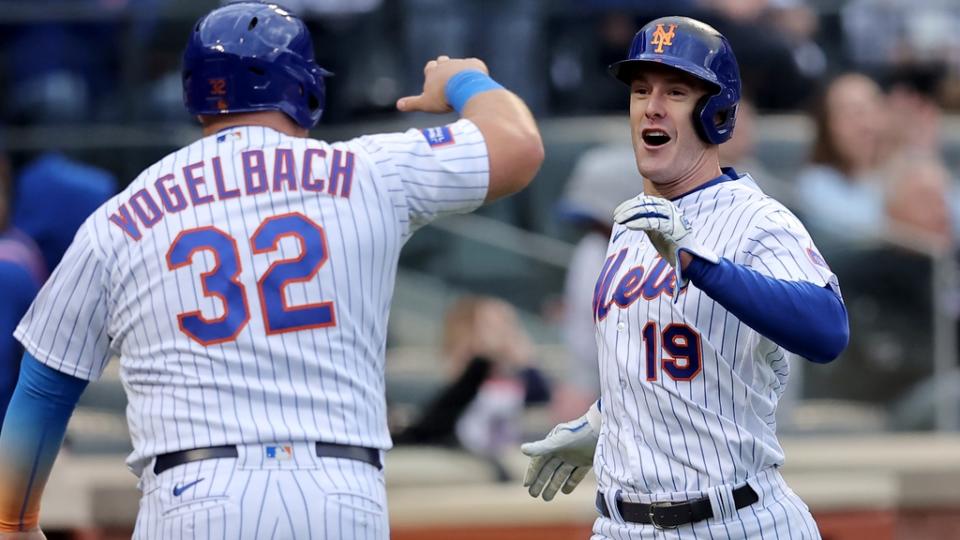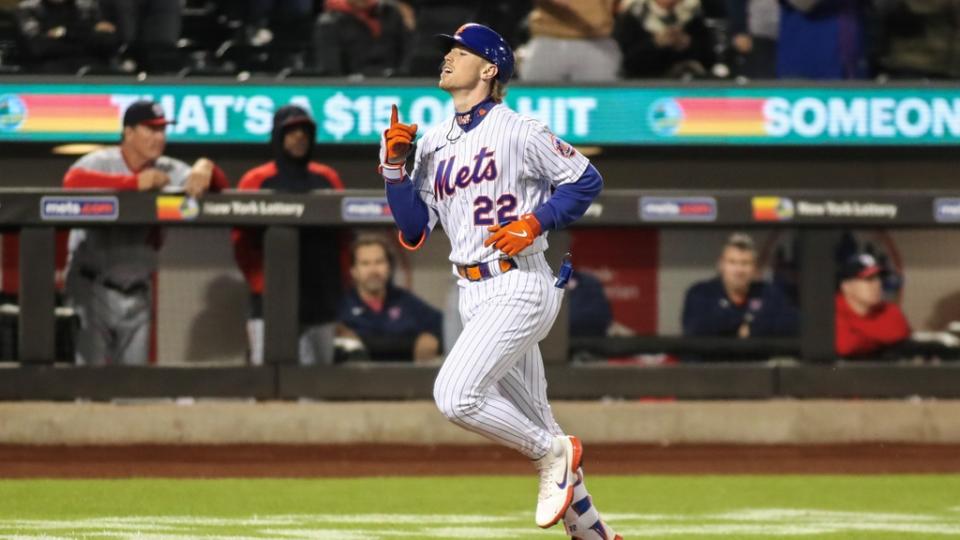Doubleheader Notes: Mets looked solid in series loss to Braves

It hardly felt like a series loss to their most important division rival, the way the Mets dropped two of three games to Atlanta.
The series began with a five-inning, waterlogged defeat on Friday night, paused for two full days as the rain continued, and concluded with 18 back-and-forth innings on Monday.
The Mets lost no dignity in dropping Game 1 of the doubleheader, 9-8, after falling behind 6-1 in the second inning and facing one of the best pitchers in the sport, Spencer Strider. And they rallied late to salvage Game 2, 5-3.
Here are some observations from an extended day at Citi Field:
A rally like you draw it up
Mets GM Billy Eppler acquired Mark Canha and Daniel Vogelbach in part because of their elite ability to make quality swing decisions. The team’s game-winning rally in the sixth inning of game two presented a nifty combination of contributions from players selected by Eppler and from players he inherited.
With one out, Vogelbach and Canha drew walks, which chased effective starter Charlie Morton from the game. Players who see a lot of pitches tend to hasten pitching changes, an unquantifiable but important element of what Vogelbach and Canha bring.
Reliever Michael Tonkin then faced the Mets’ top two offensive prospects. He retired Brett Baty -- who contributed plenty on the day with three hits and his first big league home run against a lefty -- then surrendered a two-run double to Francisco Alvarez, which put the Mets ahead.
The players the Mets signed plus the prospects who might lengthen their lineup and provide more power. That’s the kind of rally that makes an organization smile.

Brigham and Smith the “lefties?”
A less happy topic is the current construction of the bullpen.
As if starting Denyi Reyes in Game 1 was not a strong enough indication of the Mets’ depleted pitching, so was Buck Showalter’s need to call for Jeff Brigham to face Michael Harris II in the seventh inning of Game 1.
Now that Brooks Raley is on the injured list with elbow inflammation (though, as we reported Sunday, the injury is not considered serious), the Mets have no left-handers in the pen.
In the contemporary game, when then the three-batter rule forces pitchers away from matchup specialization, this isn’t the crisis it would once have been. But when Showalter goes to his pen to face a left-handed batter, he must determine which righties have the stuff best suited to the situation.
In a world where Edwin Diaz was never injured in a celebration, that would be David Robertson. But with Robertson busy as the de facto closer, I asked Showalter before the doubleheader to identify which righties’ stuff played best against lefties.
The true answer is probably no one, really. Showalter could use a lefty out there. But asked to choose from the current options, he mentioned Jeff Brigham, because of the cutter that Brigham has introduced this year, and Drew Smith, because of his changeup. Both pitches play decently against lefties.
Sure enough, Showalter called on Brigham in Game 1 to face lefty-hitting Harris with one on and two outs in the sixth. Harris drew a walk.
In Game 2, Showalter had Smith ready in the sixth but opted to stick with starter Tylor Megill to face lefty Eddie Rosario, who hit a three-run double to give the Braves what proved a temporary lead.
Showalter said that he considered going to Smith, but “I had confidence Megill could get him out. He didn’t.”
The situations were different. In the first game, the Mets were trailing, not trying to protect a lead. Plus, with so many relievers already used, Showalter was trying to get Megill through the inning. Managers don’t make individual moves in a vacuum but must consider the whole picture, including upcoming games. And this was a taxing day for the bullpen.
Marte moving in right direction
Less than a week ago, Starling Marte’s swing and timing looked as bad as they have during his one-plus seasons as a Met. Team officials were left to wonder how much neck pain he was playing through. He looked better last Thursday in going 1-for-4 in a win over Washington, then played just four innings over the next three days.
Marte looked good immediately on Monday, with a walk in the first inning, a 103.8mph single in the third, and a 107mph lineout in the fourth.
Marte finished the day 2-for-8 (he was one of several to struggle against Morton’s curveball in Game 2, but overall, looked good). It is almost impossible to overstate his long-term importance to the Mets’ offense.

Baty hit lefties hard
In addition to homering off lefty Dylan Lee, Baty scorched a 106.2mph lineout off A.J. Minter to end the first game. Just about any rookie will face questions about whether he should platoon; Baty might be starting to build a case that he should not.
Senga: Not sore, says the manager
Kodai Senga is not in fact in the witness protection program, though he hasn’t pitched since last Thursday, and won’t pitch again until Friday. Because Senga is accustomed to pitching about once per week in Japan, the Mets are trying to ease him into life in MLB. They are therefore always seeking opportunities to get him extra rest.
“The plan going into the season was, try to give him as much of a semblance of what he's come from,” Showalter said. "There were many times he would pitch every seven days ... and we had plans to try to, at some point, give him that blow in between."
Because of the elbow issues that scared off several teams when Senga was a free agent, I asked Showalter on his way out of the interview room if Senga was sore.
“No,” the manager said.

